No wonder yarn in textile industry is available everywhere we can see! Discover every small detail of what is yarn, from its classification to production, in this content!
What is Yarn in Textile? Define the Yarn
Yarn in textiles refers to the staple and filament fiber-based continuous strand. This strand remains arranged to form a suitable form for use.
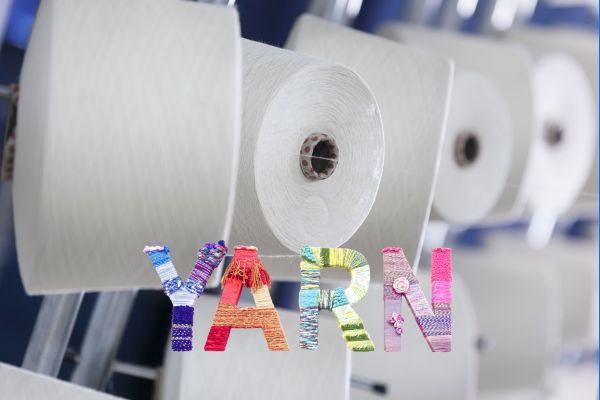
Yarn is nothing but a textile product with a substantial length and a comparatively small section of details consisting of fibers. Twisting is a usual part of yarn making. Yarn can be twisted with more than one yarn to create added value. So, yarn is available in these given forms:
- Twisting several fibers together.
- Without twisting a few filaments form a zero-twist yarn.
- A degree of twist is required in several filaments.
- A filament with or without any kind of twist.
But here, staple fibers tend to be twisted into yarns whereas filament yarns require little or no kind of twisting to get them together in a yarn manufactured. Besides, yarn covers the preparation of fiber and the spinning nature of cotton or the blends of cotton. Spun and filament yarns are their special 2 types.
Types of Yarn
Before getting into the characteristics, it is important to define spun and filament yarns.
a) Spun yarns: refer to the assembled staple fibers that remain bound together intending to produce specific characteristics. The features can be strength, handle, or any appearance. Examples can be carded, combed, woolen, worsted, or linen cotton.
b) Continuous filament yarns: are the combined version of the required filaments that produces a specific number of filaments with proper thickness through the operation of spinning. Here, the filament yarns can be natural, synthetic, or non-synthetic elements.
Colors of Yarn
Yarn is undyed in the form of natural as well as artificial dyes. Although most of the yarn comes in a uniform hue, a wide selection of yarn cannot be ignored. The list is here in the following:
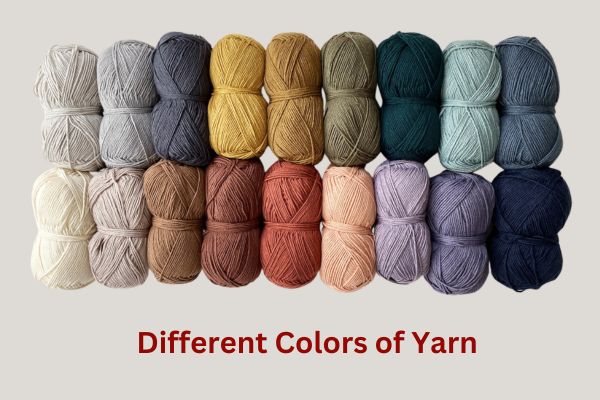
- Heathered or Colored Fiber: Yarns that are available in a fleck of various colored fiber.
- Ombre/ Light to Dark Shades: Yarn that comes in a single hue with light and a shade of dark.
- Multi-Colored: Two or more hues are available in this yarn color type.
- Self-Striping: Dyed yarn with better lengths of color that create stripes in any project.
- Marled yarn: A different-coloured yarn that remains twisted together.
Characteristics of Textile Yarn
The characteristics of the textile yarn in the industry are given below:
- Excellent handle with perfect uniformity.
- Light in weight with better covering power.
- Stretchability is high with a satisfactorily functional design.
Various Properties of Textile Yarn
The yarn properties tend to be twisted to preserve a doable length of gauge and yarn variation as well as friction. From mechanical properties to the effect of fiber length and fineness, the textile yarn varies reasonably. The discussion on the various properties is here in the following chart:
| Mechanical Properties | Description |
| Frictional Properties | Higher extensibility |
| Flexural Properties | The subject to bending and rigidity. |
| Tensile Properties | Requires maximum force to disintegrate. |
| Torsional Properties | It determines what should be the response of fibers to form any yarn. |
Tensile Properties of Textile Yarn:
- Properties
- Elasticity
- Breaking Extension
- Plasticity
- Elastic Limit
- The Point of Breaking
- Elongation
Textile Yarn Properties and The Effect of Fibre Length:
- The Strength of Yarn
- Efficient Processing
- Yarn Handling
- Yarn Count
- Yarn Hairiness
- Lustrous Effect
- Yarn Evenness
- Manufacturing Process
Classification of the Yarn in the Industry
Based on yarn processing, use, and the number of strands, the yarn comes with several classification lists in the textile industry. Here, the discussion starts with the classification based on the yarn list.
A. Classification Based on the Processing of Yarn
Textile yarns are easy to be classified into 3 forms. They are:
1. Carded Yarn:
The inferior quality yarn that contains many short fibers as well as naps to create count coarser yarn. Because of the use of a comb, it has a great application on denim fabrics.
2. Combed Yarn:
A super yarn quality where there is a use of combed Yarn with no naps or any short fiber. To make any finer count yarn, this yarn gets to use in any manufacturing of knitting or non-denim fabric.
3. Semi-Combed Yarn:
A medium-quality yarn, produced by the mixed up of combed silvers.
B. Classification Based on the Number of Strands
Yarns are widely recognized as single, ply, and cord yarns. The discussion is below:
1. Single Yarns:
Yarns that are single strands composed to hold fibers together, with or without any twist. Single yarns are available in S or Z twist for spun yarns.
2. Ply Yarns:
This is the composition of more than two single yarns being twisted together. To make ply yarns from the strands of spun yarns, those individual strands must be in a twisted version in a specific direction following the combined and twisted version in the opposite direction.
3. Cord Yarns:
They are twisted ply-yarns made of yarns. These yarns follow an SZS form where there is use of S-twist and Z-twist piles that are combed together.
C. Classification of Textile Yarn Based on Application
Here is the list of fabric construction yarns and yarns available for handwork.
Fabric Construction Yarns are classified as Woven and Knitted yarns. In the process of weaving, the yarn has greater stress, slightly stronger than the weft yarn. To understand woven and knitted functions, you need to understand what warp yarn and weft yarns of fiber are.
1. Warp Yarn of Fiber: A yarn set that gets stretched in a specific place on a loom before the introduction of the weft.
2. Weft Yarn of Fiber: The yarn woven that remains across the fabric width through any lengthwise warp.
D. Classification of Yarns Based on Handwork
Yarns are greatly useful for hand-knitting purposes. To serve this purpose, there is a requirement of more than two-ply. A few types with descriptions are in the following:
| Yarns | Description |
| Fingering Yarns | Two or three-ply made weight light to medium. |
| Germantown Yarns | Soft and thick with four plies to medium-weight yarn. |
| Shetland Yarns | Fine, lightweight, and soft or fluffy yarn. |
| The Twisted and Robust yarn makes sweaters. | The Twisted and Robust yarn to make sweaters. |
| Zephyr Yarns | Wool and wool blended yarn with different fibers. |
Pre-Production of Yarn Manufacturing Process
Before going directly to the production process, discuss the yarn pre-production necessities: Materials and Fibers.
a) Materials of Yarn
Yarn materials are traced back from natural and synthetic types of fibers. There are 2 major types of yarn: Spun and Filament, which have been discussed before.
b) Fibers Required for Yarn Production
The most crucial plant fiber is cotton. Polyester is another spun fiber type in the world. For yarn processing, cotton is useful for being harvested, ginned, and prepared. Besides, polyester is the extruded form of natural gas and oil. Meanwhile, synthetic is a continuous Strand that makes gel-state materials.
The Process of Yarn Production in the Textile Industry
The yarn-making process is a spinning one that consists of several steps. All the steps require fibers. The step-by-step process is:
Yarn Manufacturing Process
Yarn production is a complex process that involves several steps, from raw material to finished product. Here is a brief overview of yarn manufacturing process:
A. Process of yarn production:
Yarn production converts fibers into usable yarns for knitting, weaving, and other textile applications. Yarn production involves several steps, from selecting raw materials to spinning fibers into yarns.
1. Fibre selection: The first step in yarn production is to select the fiber type. Fibers can be natural or synthetic. Cotton, wool, silk, and flax are the natural fibers most commonly used. While polyester, nylon, and acrylic are some of the most popular synthetic fibers.
2. Fibre preparation: Once the fibers are selected, it’s ready for spinning. This includes cleaning, carding, and blending. Cleaning removes any impurities from the fibers, carding aligns the fibers in a parallel direction and blending combines fibers to create a specific texture or color.
3. Spinning: After preparation, the fibers are spun into yarn. The spinning process involves twisting fibers together to create a continuous strand of yarn.
4. Ply: The next step is to ply the yarn. Plying involves twisting two or more strands of yarn together to create a stronger and more durable yarn. This is often done using a spinning wheel or a plying machine.
5. Winding: Once the yarn is plied, it is wound onto bobbins or cones. This is done using a winding machine that creates a smooth and even wind.
6. Finishing: The final step in yarn production is finishing. This includes washing, dyeing, and finishing yarn to create the desired texture, color, and sheen. The finished yarn is then wound onto cone.
Overall, the process of yarn production is a complex and intricate process that requires precision and attention to detail at every step.
B. Different types of spinning :
Spinning is the process of transforming fibers into yarn or thread. There are several different spinning processes, each with unique characteristics and methods. Here are some of the most common types of spinning processes:
1. Ring Spinning: This is the most commonly used spinning process. Here the fibers are drawn out and twisted using a spindle. Then a ring to create a continuous yarn. The ring-spinning process is suitable for creating a wide range of yarn counts and is widely used in textile production.

2. Open-End Spinning: This process, known as rotor spinning, produces coarse yarns. The fibers are fed into a rotor, spilling at high speed to create the yarn. Open-end spinning is a high-speed process that produces yarn with less twist than ring spinning.
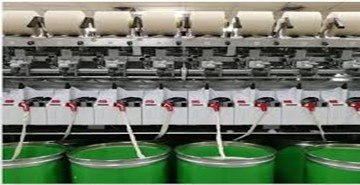
3. Air-Jet Spinning: The fibers are drawn out and twisted by compressed air as they are fed through a nozzle. This fast and efficient spinning process produces high-quality yarn suitable for various applications.
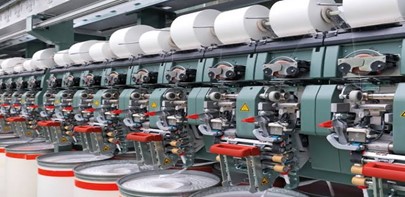
4. Friction Spinning: This spinning process uses a high-speed rotating surface, such as a ceramic or metal disc, to twist the fibers into yarn. Friction spinning is a high-speed process that produces yarn with a lower twist level than ring spinning.
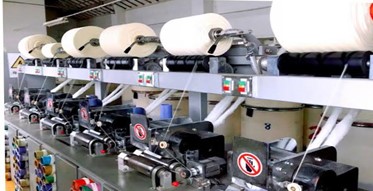
Each type of spinning process has its unique characteristics and advantages. The choice of the spinning process will depend on the specific requirements of the final product.
The Numbering System of Yarn
In the textile industry, things get measured based on the weight or the thickness size of the yarn. It called yarn count. The yarn numbering system provides the length of the yarn weights. In response, what should the yarn length be in a specific weight? The entire number system of yarn is classified as direct or indirect.
N.B: Here, one is the exact opposite of the other. Whatever the number system of yarn you choose, both have benefits and challenges in certain areas. Yarn numbers are available in impossibly large or small amounts based on how many units have been utilized there.
What is Yarn in the Textile Industry Used for?
Application of Yarn
In the textile industry, yarn comes in great use. Mostly, the application areas are:
- Sewing: Either done by hand or using a machine-named sewing machine.
- Crocheting: Making Sweaters made of wool, and cotton, with fingering yarn.
- Knitting: To produce fabrics, yarns are applicable in the knitting procedure.
- Weaving: Weaving is a lengthwise subjective yarn for greater use.
- Embroidery: Another application area to apply on fabrics.
- Ropemaking: Ropemaking is easier with the help of textile yarn.
Conclusion
From this above content discussion, it is estimated that yarns are a length of a staple as well as filament fiber-made fibers. To form yarn, there are immense experiences of spun and filament yarns. In this article, the discussion on characteristics, classification, uses, and manufacturing, all have been covered. Let us know if you have any further queries regarding yarn in the textile industry!

Mahedi Hasan working as an Executive (Fabric Marketing) at Pengnuo Group. Graduated with B.Sc. in Textile Engineering. Before was a Top Rated content writer at Upwork, and Level 02 Seller at Fiverr, Level 02 Publisher at Ezoic. Very passionate about content writing, SEO practice, and fashion website designing. Highly Experienced fashion writer for the last 4+ years. Have extensive 7 years of experience in the wholesale clothing business.
